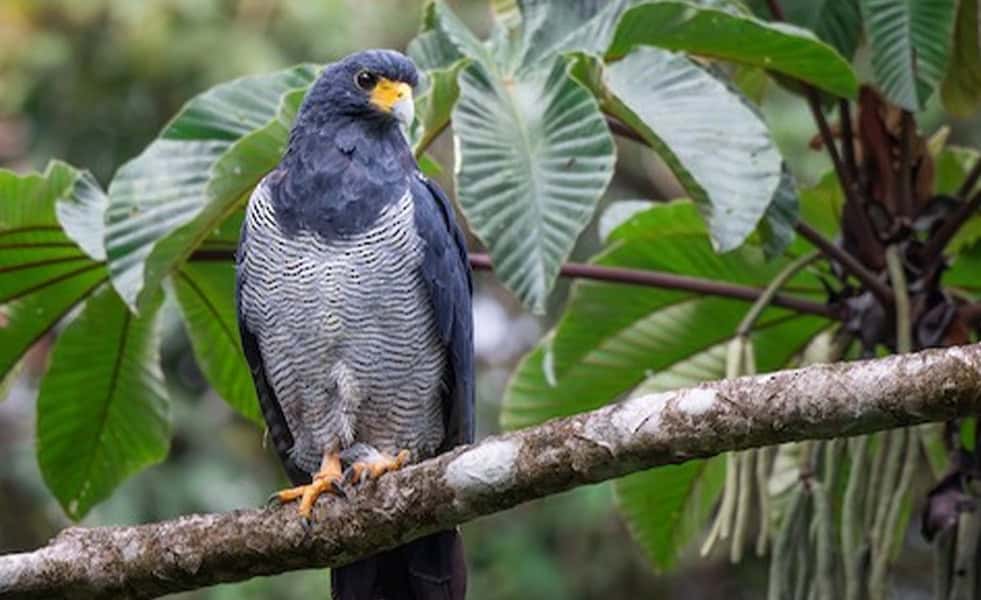Sometimes it can feel as though the time of wildlife discoveries is in the past. Sure, there are probably some insects or other tiny creatures out there that haven’t been documented, but all of the larger, more charismatic species probably have a stack of scientific papers and a few nature documentary shoutouts to their name. Surprisingly, that is not the case.
Take the barred hawk for example. It’s a large bird of prey with a striking lack of information about its life history. We know its wings are shorter than you’d expect, a mainstay of its diet is surprising, and few people have seen its nest. That’s about it. Let’s explore what little we know in more detail.
Depending on which bird book you own, the barred hawk has two different scientific names. In older books it’s Leucopternis princeps, while newer editions list it as Morphnarchus princeps. The changing of scientific names is fairly common especially as researchers use DNA analysis to better understand how species should be grouped together. As far as common names are concerned, besides barred hawk it is also known as the black-chested hawk in English. In Spanish, the name I see consistently used in Costa Rica is gavilán pechinegro.
The barred hawk appears black from above with a white bar on its tail. Its chest is white with rows of fine black bars, thus the common name. It’s a large-bodied bird but its wings are shorter than many similar-sized birds of prey. This shortened wingspan appears to be an adaptation to the barred hawk’s habitat. These birds make their home in the canopy of wet montane forests, where they often perch on branches and swoop down to capture their prey. It’s thought that their shorter wings allow them to maneuver easier inside of the dense forest.
For me, one of the prey items that they most frequently swoop down and grab is the most interesting fact of the article. A couple of researchers in Ecuador spotted a barred hawk nest and set up a blind in order to study the nesting behavior of these mysterious birds. While watching the nesting pair, they documented and published an article about the prey items that they brought to the nest. The birds ate a few big worms, some small mammals, a couple of baby birds, and a fairly decent number of snakes, but the prey item that made up over half of their diet was caecilians.
Now, you have to be a pretty big wildlife geek to know what a caecilian is. Caecilians are limbless, vermiform, fossorial amphibians. That is, they’re worm-like amphibians that spend the huge majority of their lives burrowing underground. I’ve never come across a bird who dined so frequently on these creatures, and scientists are still trying to figure out exactly how they do it.
Besides documenting their fascinating diet, the same researchers published another article about the location and form of the nest, as well as a description of the single egg because a barred hawk nest had only been documented once before by some researchers who photographed one from a helicopter in Panama. Both sets of researchers noted that the nest was located on a rocky outcrop rather than in the branches of a tall tree as is the practice of other, similar species of hawk.
I have not yet had the privilege of seeing a barred hawk in person, but I’ve managed to record three barred hawk videos with my camera traps. A few years ago, I recorded one in Limón munching on something (not a caecilian) while perched on a log over a rushing river in a dense montane forest. Just recently I recorded two more videos, oddly enough also on a log over rushing water in a montane forest, this time near Pérez Zeledón. Take a look at all three clips in the video below.
About the Author
Vincent Losasso, founder of Guanacaste Wildlife Monitoring, is a biologist who works with camera traps throughout Costa Rica. Learn more about his projects on facebook or instagram. You can also email him at: vincent@guanacastewildlifemonitoring.com






